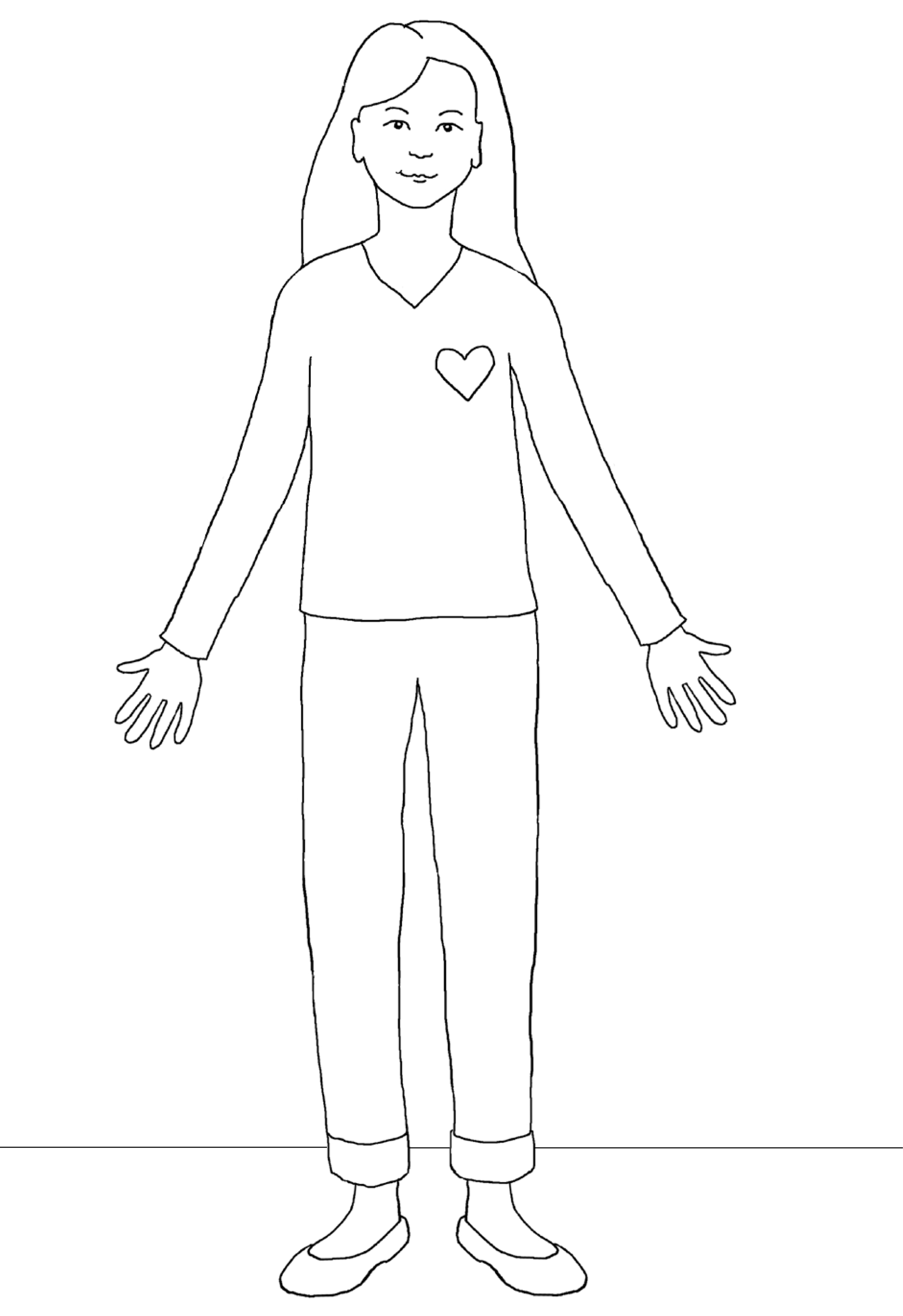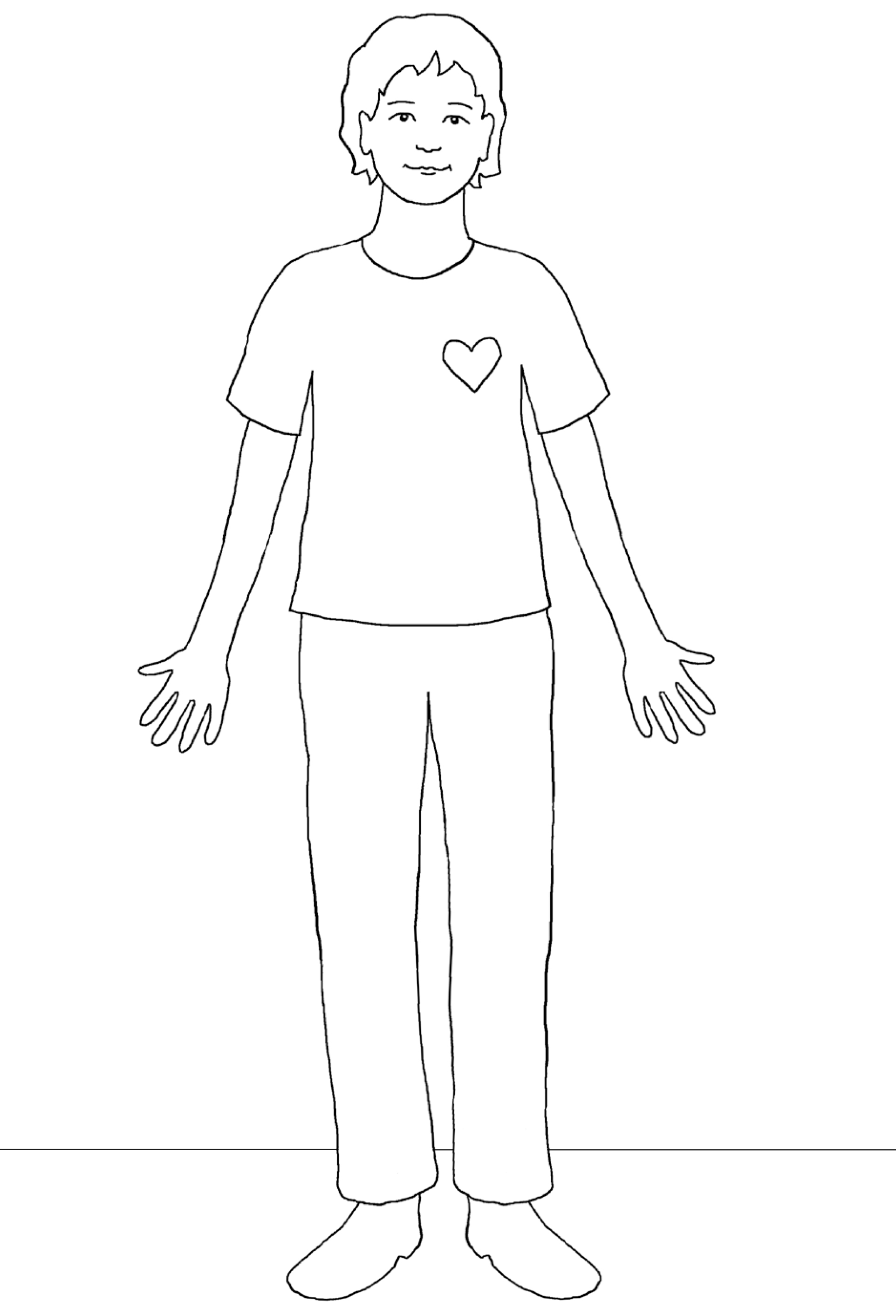Hints:
- This exercise can lead to very personal, perhaps even painful insights, and must be carefully guided by the teacher. The students should only reveal as much as they feel comfortable; it should in no way be inferred that they should “come out”.
- Sources: party game “Jetzt bist du dran!” (now it’s your turn); Begleitheft für Lehrerinnen (accompanying booklet for teachers). Demokratie-Training für Schüler/innen der Klassenstufe 5 bis 7
(democracy training for students, grades 5–7). Link: http://www.gesichtzeigen.de/wp-content/uploads/2008/06/begleit_gesell_05.pdf
Procedure:
- The students receive one sheet of paper each with an outline of a person and the following oral instructions: individually they should fill in the space within the outline with adjectives or by writing short sentences about themselves (self-perception). In doing so, they should think about their characteristics, strengths, weaknesses, wishes, dreams, etc. This should be explained with a few concrete examples. Filling in may take about 10 minutes.
- In pairs, the students then exchange their outlines. On the classmates‘ sheet they record in key words or short sentences how they experience them (outside perception; referencing the same points as in the self-perception).
- Reflection and discussion with the whole class: To what extent do self-image and public image coincide? What astonished me? What pleased me? What have I learned or noticed? What do I want to retain or change, inspite of, or because of the outside perception?
- As a further prompt for discussion: we have now familiarized ourselves with the outside perception by way of the input of one classmate. However, there are many more people who perceive and judge me “from outside”. Who are all these people? How do I experience these external views, what kinds of feelings connect me with them? (This is also an opportunity to recognize the cultural diversity within the environment and to reflect on its role and influence on these views.)
The exercise can be extended for upper level classes (e. g. discussion of a refined list of categories to be observed; reflecting of the outside views by two classmates instead of one). Instead of the picture with the outline, scales with certain aspects can also be drawn (lines with values of 1–10 for aspects, such as “my social behavior”, “my behavior as a student” etc.). On these scales, crosses with different colors are entered, signifying self-perception and outside perception. It is also possible to conduct interviews with different people about the topic of self-perception and outside perception.
WS: Inside view – outside view
Worksheet for students

WS: Inside view – outside view
Worksheet for students







